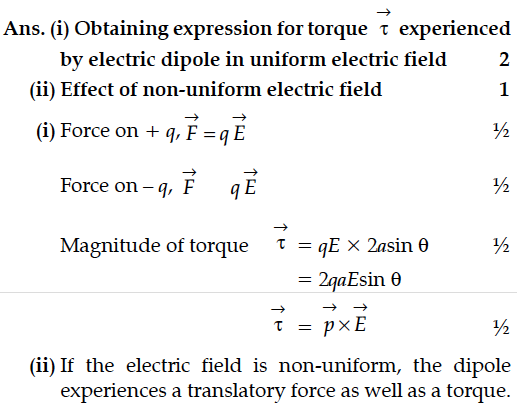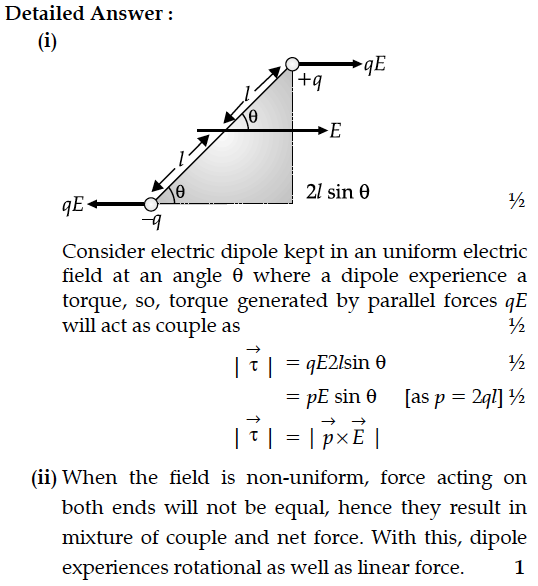(i) Obtain the expression for the torque experienced by an electric dipole of dipole moment in a uniform electric field, .
(ii) What will happen if the field were not uniform?
(ii) What will happen if the field were not uniform?


Derive an expression for electric field of a dipole at a point on the equatorial plane of the dipole. How does the field vary at large distances?
(i) Derive the expression for electric field at a point on the equatorial line of an electric dipole.
(ii) Depict the orientation of the dipole in (i) stable, (ii) unstable equilibrium in a uniform electric field.
Electric flux emanating through a surface element placed in an electric field is
(A) 10 units
(B) 20 units
(C) 4 units
(D) 16 units
A point charge +Q is placed in the vicinity of a conducting surface. Draw the electric field lines between the surface and the charge.
Find the expression for electric field intensity in an axial position due to electric dipole.
what is the angle between an electric dipole moment and then electric field strength due to it on its equatorial line?
(A) \(0^\circ\)
(B) \(90^\circ\)
(C) \(180^\circ\)
(D) None of these
Two point charges q1 and q2 are located at points (a, 0, 0) and (0, b, 0) respectively. Find the electric field due to both these charges at the point (0, 0, c).
Define relaxation time of the free electrons drifting in a conductor. How is it related to the drift velocity of free electrons ? Use this relation to deduce the expression for the electrical resistivity of the material.
An electric dipole is placed in a uniform electric field.
(i) Show that no translatory force acts on it.
(ii) Derive an expression for the torque acting on it.
(iii) Find work done in rotating the dipole through 180°.
(i) Derive an expression for drift velocity of free electrons.
(ii) How does drift velocity of electrons in a metallic conductor vary with increase in temperature ? Explain.
What is relaxation time ? Derive an expression for resistivity of a wire in terms of number density of free electrons and relaxation time.
(i) When an ac source is connected to an ideal capacitor show that the average power supplied by the source over a complete cycle is zero.
(ii) A lamp is connected in series with a capacitor.Predict your observation when the system is connected first across a dc and then an ac source.What happens in each case if the capacitance of the capacitor is reduced ?
(i) A point charge (+Q) is kept in the vicinity of an uncharged conducting plate. Sketch electric field lines between the charge and the plate.
(ii) Two infinitely large plane thin parallel sheets having surface charge densities σ₁ and σ₂ (σ₁ > σ₂) are shown in the figure. Write the magnitudes and directions of the fields in the regions marked II and III.
The temperature coefficient of resistivity, for two materials A and B, are 0.0031 / °C and 0.0068 / °C respectively.
Two resistors R1 and R2, made from materials A and B, respectively, have resistances of 200 Ω and 100 Ω at 0°C. Show on a diagram, the 'colour code', of a carbon resistor, that would have a resistance
equal to the series combination of R1 and R2, at a temperature of 100°C.
(Neglect the ring corresponding to the tolerance of the carbon resistor).
